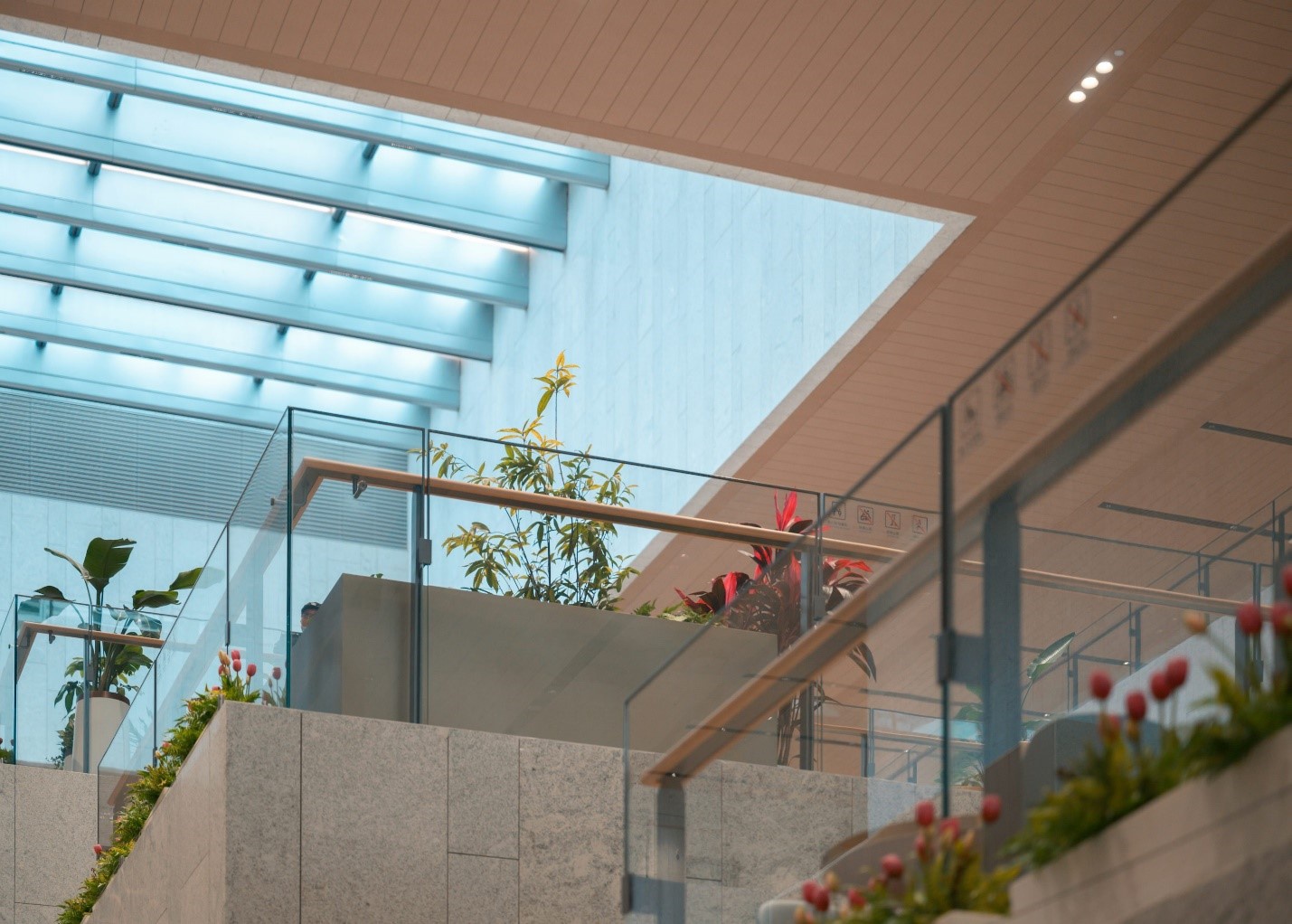
Skylights can significantly enhance indoor plant life in offices by providing much-needed natural light. This light supports photosynthesis, helping plants thrive even in indoor environments. Natural light from skylights penetrates deeper into spaces, reaching plants that might otherwise struggle to get enough light.
This improves plant health and contributes to a more vibrant office atmosphere. Read on to discover how skylights influence plant growth, the benefits of diffused light, and the comparison between spaces with and without skylights.
Importance of Natural Light for Indoor Plants
Natural light is essential for photosynthesis, the process by which plants convert light energy into chemical energy. Photosynthesis enables plants to produce the food they need to grow and survive. Without sufficient light, indoor plants can become weak, leggy, and more susceptible to diseases.
Several studies highlight the benefits of natural light on indoor plant growth. For instance, plants like snake plants, pothos, and philodendrons thrive in environments where natural light reaches them. Skylights can provide the necessary light for these plants, ensuring they receive enough energy for optimal growth.
Even diffused light through skylight glass can be sufficient for many indoor plants. Diffused light spreads evenly, reducing the intensity of direct sunlight that can sometimes scorch delicate plants. This type of light mimics the natural conditions many plants experience in their native habitats, such as under the canopy of trees.
Is Diffused Light Enough?
Diffused light through skylights often provides adequate illumination for shade-tolerant plants. These plants do not require intense, direct sunlight and can thrive under conditions of moderate light. Examples include:
- Snake Plant (Sansevieria): Known for its ability to thrive in low to moderate light conditions.
- ZZ Plant (Zamioculcas zamiifolia): Prefers indirect light and is highly adaptable.
- Peace Lily (Spathiphyllum): Thrives in low to medium light and is ideal for offices.
- Pothos (Epipremnum aureum): An adaptable plant that can thrive in various lighting conditions, including low to moderate light.
- Spider Plant (Chlorophytum comosum): Prefers indirect light and is easy to care for indoors.
- Cast Iron Plant (Aspidistra elatior): Known for its resilience and ability to tolerate low light levels.
- Chinese Evergreen (Aglaonema): Thrives in low to moderate light and is great for adding greenery to indoor spaces.
However, for plants that need more intense light, such as succulents and some flowering plants, additional light sources might be necessary.
Skylights vs. Artificial Lighting
With Skylights
Offices with skylights benefit from an abundance of natural light. This light:
- Enhances Plant Growth: Natural light supports healthier and faster plant growth compared to artificial light.
- Improves Plant Health: Plants exposed to natural light are generally more robust and vibrant.
- Creates a Pleasant Environment: Natural light contributes to a more aesthetically pleasing and inviting workspace.
Without Skylights
In offices without skylights, plants rely on artificial light. While artificial light can support plant growth, it often lacks the full spectrum of natural sunlight. This can lead to:
- Slower Growth: Plants may grow more slowly under artificial light.
- Increased Maintenance: Artificial light often requires careful management to ensure plants receive enough illumination.
- Higher Energy Costs: Using artificial lights increases energy consumption and costs.
Research shows that natural light positively impacts plant growth. According to a study, natural light improves plant health and reduces the need for artificial lighting. This directly leads to energy savings and lower operational costs.
Practical Considerations for Installing Skylights
The placement of skylights is crucial for maximizing their benefits. Considerations include:
- Orientation: Skylights facing north provide consistent, diffused light, while south-facing skylights offer more direct sunlight.
- Size and Number: Larger skylights or multiple skylights increase the amount of natural light entering the space.
Choosing the right glazing for skylights can enhance their effectiveness. Options include:
- Low-E Glass: Reduces heat transfer and enhances energy efficiency.
- Tinted Glass: Controls glare and reduces heat gain.
- Diffused Glass: Spreads light evenly, reducing hotspots and shadows.
Furthermore, skylights require regular maintenance to ensure they remain clean and effective. High-quality materials and professional installation can minimize maintenance needs and extend the lifespan of skylights.
Case Study: Green Offices with Skylights
An office building in downtown Seattle installed several large skylights as part of a green renovation project. The addition of skylights transformed the office environment, providing ample natural light for the numerous indoor plants. Employees reported improved mood and productivity, while the plants thrived, creating a lush, green workspace.
On the other hand, a corporate office in New York incorporated skylights to reduce energy consumption. The natural light provided by the skylights reduced the need for artificial lighting, leading to significant energy savings. The indoor plants benefited from the increased light, contributing to a healthier and more pleasant office atmosphere.
Offices with skylights benefit from healthier plants, improved aesthetics, and reduced reliance on artificial lighting. For optimal results, consider the positioning, glazing options, and maintenance of skylights.
If you are looking to transform your office into a vibrant, healthy workspace, get in touch with us today. We can help you enhance plant growth, improve aesthetics, and reduce energy costs with natural light. Contact us today to start your project and see the difference VTECH skylights can make!